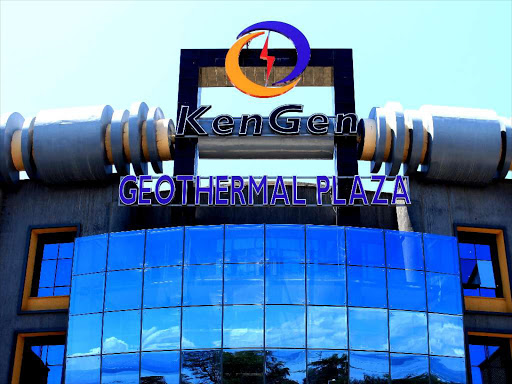[ad_1]
Samsung’s Galaxy A12, one of its key offerings on the low-end side of its budget offerings is perhaps one of the devices that go toe-to-toe with Infinix’s Hot 10T.
The comparison, as we can see below, is mostly apples to apples when it comes to some key features and specifications like the cameras, the battery, the display (resolution) and memory (both storage and RAM) options. The rest is fairly subjective as one device is likely to hold some slight advantage over the other given the choices either device maker went with.
However, when you’re at a shop or on an e-commerce site online and looking at getting the most value for your money, all of these things can easily be fair game so, here we go!
Specs comparison
| Infinix Hot 10T | Samsung Galaxy A12 | |
| Dimensions and weight | 171.5 x 77.5 x 9.2 mm | 164 x 75.8 x 8.9 mm, 205g |
| Display | 6.82-inch HD+ (1640 x 720 pixels, 263 ppi) IPS | 6.5-inch edge HD+ (1600 x 720 pixels, 270ppi) IPS LCD |
| Camera | Selfie camera: 8MP Main camera: 48MP + 2MP depth sensor + AI Lens with quad LED flash | Main: 48MP + 5MP (ultra-wide) + 2MP (depth) + 2MP (macro) Selfie: 8MP |
| Processor | MediaTek Helio G70 | MediaTek Helio P35 |
| Memory | 4GB RAM, 64/128 GB onboard storage (expandable via microSD) | 4GB RAM, 128GB internal storage (expandable via microSD up to 1TB) |
| Operating System | Android 11 (XOS 7.6) | Android 10 with Samsung One UI 2.5 (upgradable to Android 11 with One UI 3.1) |
| Battery | 5,000mAh | Same + 15W fast charging |
| Network | 3G, 4G | Same |
| Connectivity | Wi-Fi 802.11 a/b/g/n/ac (2.4/5GHz), Bluetooth, microUSB | Wi-Fi 802.11 a/b/g/n (2.4/5GHz), Bluetooth, USB Type-C |
| Colour options | 7° Purple, 95° Black, Heart of Ocean, Morandi Green | Black, White, Blue, Red |
| Others | Fingerprint sensor (at the back) | Fingerprint sensor (on the side of the device, on the power button) |
Design
The Infinix Hot 10 and its glittering glossy back might be good to look at but the feel of that plastic pales in comparison to the solid feel of the Samsung Galaxy A12 and its combo of textured and matte finish back. The fingerprint sensor being embedded on the power button is also a nice touch as it makes for a much cleaner back and reduces finger movement at the back.
Sure, we have to agree that the positioning of the Hot 10T’s fingerprint sensor is more natural but that means alternating fingers between there and the power button which sounds redundant. With both devices deploying facial recognition as a secondary means of unlocking and accessing apps and system functions, it almost becomes unnecessary.
Having a slightly smaller display means a smaller body frame as well and this makes Samsung’s budget fame compact and, in my opinion, all round desirable.
That is even before it delivers its killer blow: the USB Type-C port for charging and data transfer. What more can you ask?
Display
A lot, apparently.
While these are both HD+ panels, the Infinix does appear to be more dense and less pixelated than the Samsung, even with its larger display though the Samsung ought to have the upper hand, at least on paper (263 and 270 pixels per inch, respectively). This is largely subjective and, as such, take it with a pinch of salt. You might observe different things.
By being larger, the Infinix offers more screen real estate, something that may be what one is looking for in a smartphone – or maybe not.

The big departure is when it comes to the refresh rate. Here, the Infinix Hot 10 with its 90Hz refresh rate, takes the cake easily, making it the device of choice for anyone looking at taking full advantage of such a high-refresh-rate panel. For the price, here is where you ask, why shouldn’t I have it if it’s there for a thousand shillings or two more?
Outdoor visibility is reduced on both devices and it gets to a point where you can’t crank it up any further and have to make do with what you have.
Cameras

There’s no question where we lean on this one. Sure, the Samsung Galaxy A12 has a 48-megapixel hero image sensor at the back just like the Infinix but, rest assured, the similarities end there. When it comes to the real world performance, the Infinix Hot 10T take the crown with an impressive night performance – with or without the dedicated night mode being called upon.
- Galaxy A12
- Hot 10T
The Samsung Galaxy A12’s saving grace is during the day and even then, the usual oversaturation is inescapable something that, surprisingly, isn’t a concern on Infinix’s device.
The one thing it completely blows the Hot 10T out of the water with? It’s impressive 5-megapixel wide-angle lens. I wish the Hot 10T had a wide-angle lens but it doesn’t.
Software experience
Here, the experience is largely subjective. Whereas Infinix’s XOS is just usable and fine, with lots of additions that may or may not tickle your fancy, Samsung has learned, obviously the hard way, over the years, to keep us happy with an interesting “less is more” approach to software design and user experience.

Samsung’s user experience, in my opinion, is superior here. After signing in to the device and setting it up, before migrating one’s apps from another device or re-installing them from the Play Store, the Infinix had just under 70 system and non-system applications while the Samsung had half of those (35)! That is a huge difference and it can’t be ignored.
Samsung relegates most of what they would have offered as add-on features, to its app store, the Galaxy Store.

One feature that both devices have is a dedicated way of handling games. The Galaxy A12 has Samsung’s Game Launcher feature while the Infinix Hot 10T has Infinix’s new Game Zone which builds on the Game Mode it has offered on XOS for years. Here, Infinix’s custom games solution comes out on top easily. It blends game optimization features, the kind that we have come to expect of such features with nifty customizations that enhance the experience.
Performance
The Infinix Hot 10T may be saddled with a boatload of features that makes it unattractive with so many unnecessary notifications and pop-ups but make no mistake: it has more than sufficient capabilities to handle those and whatever you throw at it. Its chipset does a fantastic job of keeping everyone satisfied whereas the Samsung Galaxy A12’s just manages to get by. It’s not disappointing but it isn’t as oddly satisfying as what we have on the Infinix either.
Battery
The power draws on both devices are almost similar which is commendable for both device makers.
The departure happens when it comes to charging. The Samsung Galaxy A12 has 15W fast charging while the Infinix Hot 10T has none and one has to wait for over 2 hours to get their device juiced up.
***

The Samsung Galaxy A12 had been in the market for at least a whole quarter before the Infinix joined it. As such, its age gets to show in the consideration of features such as the Hot 10T’s high-refresh-rate display panel. Then again, the decision to go with a standard 60Hz panel on the Samsung Galaxy A12 is more a reflection of Samsung’s approach to the budget smartphone market than it is something about timing.
Samsung’s One UI is a breath of fresh air compared to Infinix’s XOS but Infinix adds just a bunch of features to stay competitive with a superior chipset giving it a huge boost which makes it more appealing to those demanding a lot more from their devices like gamers and backing it all up with an endurance rating that keeps up with the demands of a 2021 smartphone.
The cameras are where Infinix delivers the killer blow but is that enough to convince you that there is an Infinix smartphone that matches whatever Samsung has to offer in the market and, which, if you are to keep its software misgivings aside, is turning out to be a proper contender for the kingship of this product segment?
[ad_2]
Source link
























